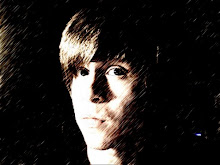
John Baskerville (Jan 1st, 1706 - Jan 8th, 1775)
John Baskerville was an English typographer, designer, print-maker and engraver of the 18th century. He and William Caslon individually produced the two greatest and most innovative fonts from that time period. The font "Baskerville," John's own creation, is still in use today.
Baskerville started his venture into typography as a writing teacher and stone engraver. He soon developed a fascination in the way letters appear on a page and eventually began his career in printing. He would print such classic works as "Aesop's Fables," "Paradise Lost," the Bible, and the work of works of Hora
ce and Virgil. As a perfectionist, Baskerville insisted on being in control of the entire printing process, from design to fruition. He began to create types of paper and design layouts, but his most famous creation was the release of his completely new type face. Baskerv
ille believed in the efficient an
d the useful, and thus, his type face reflected t
his belief. Baskerville stands as a very visually appealing, and yet not overly ornate font that led the way for many more to follow in later years. This font was widely rebuked as an amateur's work in Baskerville's time, however, and he did not receive sufficient recognition until after his death.
The font, Baskerville, is so important to typography because it was a "transitional" font, meaning it helped to bridge the gap between old ornate type face styles to the new, sharp and contrasting modern styles. It featured a variation of alternating thick and thin strokes and very frugal use of ornate designs like those used by its predecessors. Baskerville and its spartan image gained some slight popularity in its inventor's time, but only received real recognition in the early 20th century, when typographer Bruce Rogers began to take interest in it and brought about its revival. It is thought to be one of the first ushers of the modern font styles. Hugh Williamson quoted it as being "one of the most readable and pleasant designs now in use."
Examples of the Baskerville font:




No comments:
Post a Comment